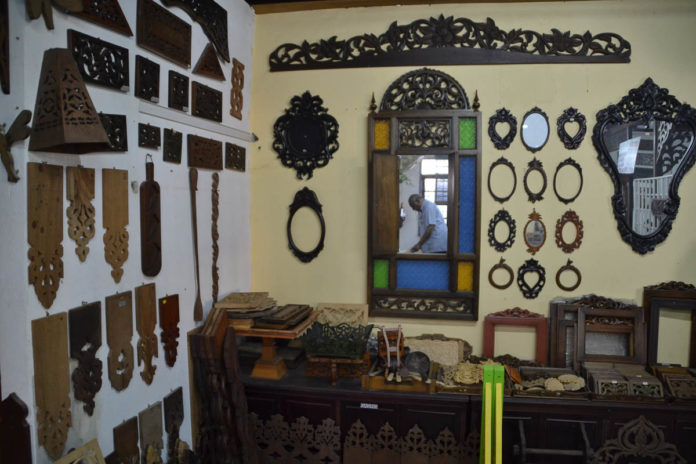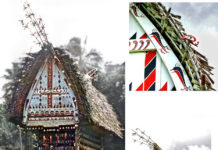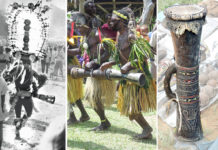
The Malays have a long tradition of woodcarving stemming from the availability of timbers for constructing buildings (palaces, mosques and private houses), boats and boat heads (bangau), weapons, tools and decorative items; the wealth of the natural environment as well as the influence of the Islamic religion for inspiring forms and motifs; the innate creativity and skill of the craftsman and continuous royal patronage.
Traditional Malay woodcarving employs two main techniques: ukiran timbul, in which floral and geometric designs are carved in relief, usually on panels, walls, pillars and doors of traditional Malay palaces and houses; and ukiran tebuk, which involves piercing or cutting out patterns in the wood, used for parts of a building where ventilation is required, such as windows, fanlights, partitions and railings. These carvings may sometimes be enhanced with gold paint. Outstanding examples of woodcarving are especially manifested in old palaces, such as Istana Kenangan in Kuala Kangsar, Perak, on roof ridges and eaves, fanlights and friezes.
The type of wood used depends on the purpose of the carving but two hardwoods, cengal (Neobalanocarpus heimii) and jati (teak, Tectona grandis), are widely used because of their durability. Standard tools include saws, planes, files, borers, shavers and knives.
The motifs on woodcarving, some of them ancient, reflect a combination of indigenous Malay, Indian and Middle Eastern elements, the latter through Islam. Motifs from nature, in stylised or abstract form, are based on flowers, such as the frangipani (cempaka), lotus (teratai) and jasmine (melur), and betel leaves (daun sirih).
Islamic influence is best reflected in designs on pulpits (mimbar) as well as in the form of calligraphy (khat) in Arabic or Jawi script. Short passages or verses (ayat) from the Holy Qur’an serve to decorate the interiors of mosques. Framed calligraphy done on wooden panels also finds a place in almost every Muslim house, as do carved Qur’an stands (rehal).
Ukiran also appears on items of daily use, such as furniture, walking sticks, coconut scrapers (kukur kelapa)—the older examples of which are carved in the shape of animals, particularly a horse—as well as in traditional weapons such as the keris hilt, often based on dragon (naga) or bird motifs.
Traditional Malay woodcarving continues to this day as a vibrant form of art and craft.




